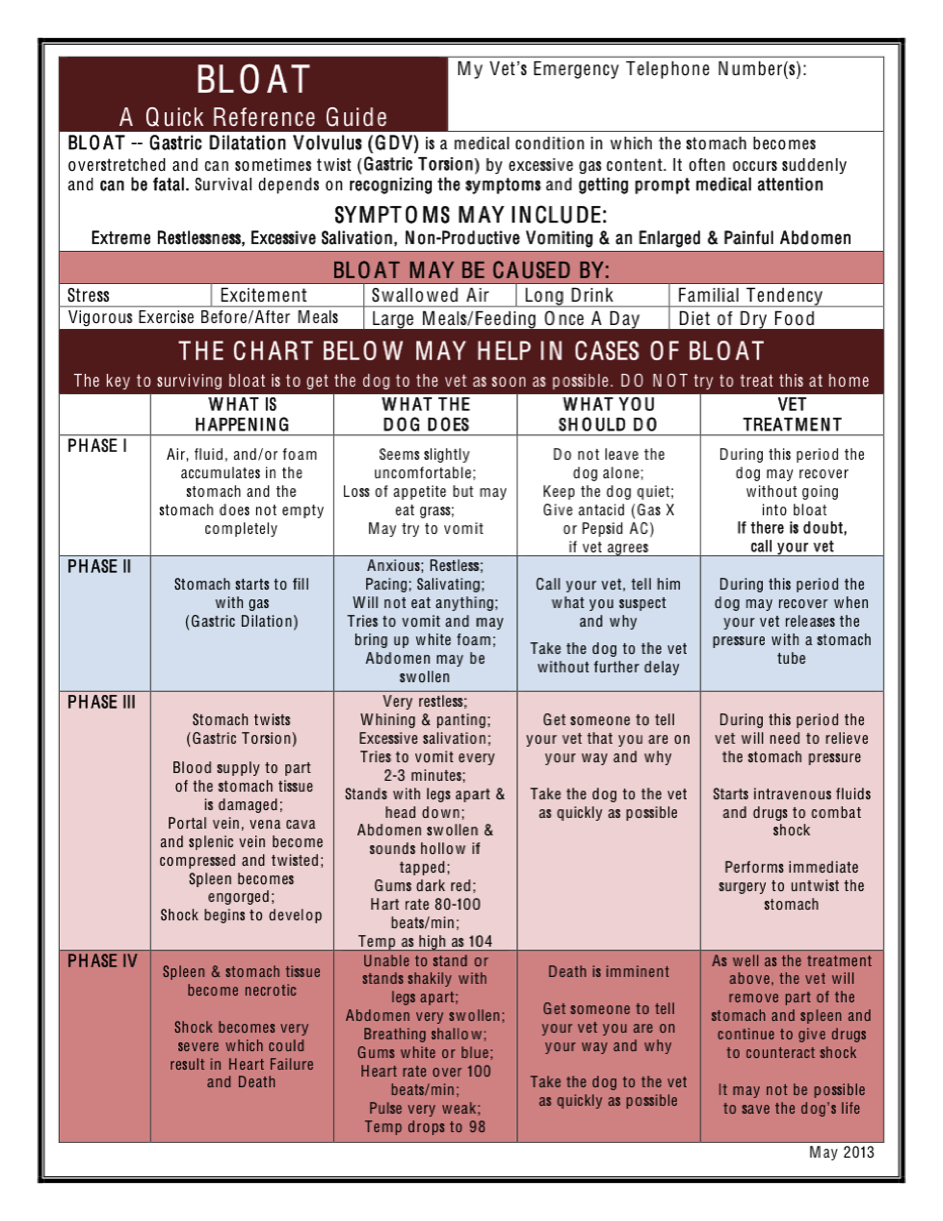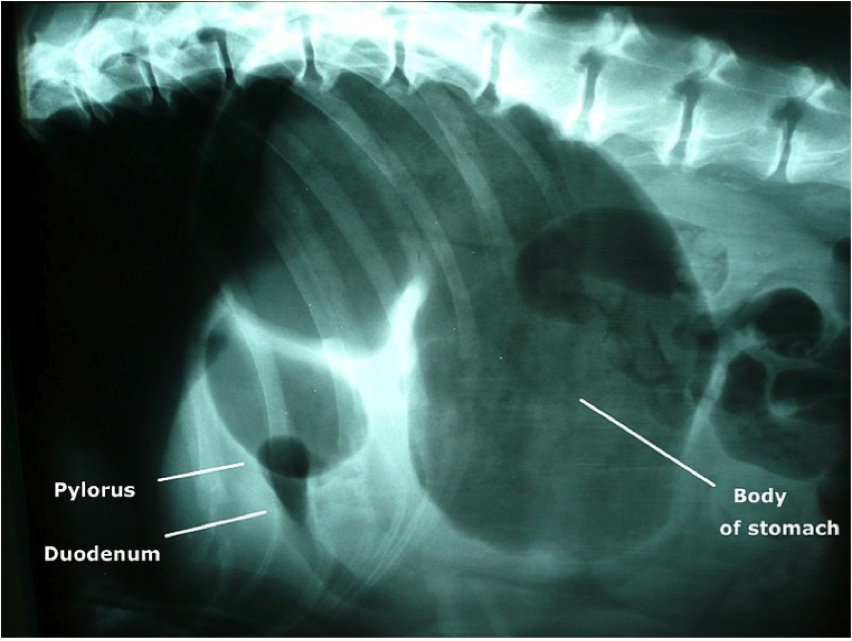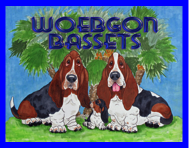
Canine Bloat
BLOAT (Gastric torsion) – Often occurs suddenly and can be FATAL. Survival depends on recognizing the symptoms and getting prompt medical help. Symptoms may include extreme restlessness, excessive salivation, non-productive vomiting and an enlarged and painful abdomen. Gas X may be effective for temporary relief in the early stages of mild bloat (without torsion).
The Chart below may help in cases of bloat. The key to bloat is to get the dog to the vet as soon as possible. DO NOT try to treat it at home.

Remember BLOAT KILLS
This will kill roughly half the dogs it affects.
Do you know the signs?
What is bloat?
When the stomach is filled with air, fluid or food, it’s considered bloat. Bloating is extremely uncomfortable, and it can put pressure on other organs and cause difficulty breathing. However, the term “bloat,” when used with dogs, generally refers to a much more critical condition called gastric dilation volvolvus, or GDV. GDV happens when the bloated stomach becomes twisted in the abdomen. This causes great tension on internal organs and often leads to partial or total restriction of blood supply to other tissues. Suppression of the caudal vena cava, a large vein that returns blood to the heart, can very quickly lead to shock. Even when treated, it’s estimated that up to 40% of GDV cases result in death.
What causes bloat?
The exact cause of bloat/GDV remains unknown. There are, however, certain activities that are thought to be correlated with bloat. Below are some suggestions that could reduce the risk of this tragic condition.
Spread out your dogs’ meals during the day. Instead of feeding one large meal, feed half of the daily portion in the morning and evening.
Limit or refrain from exercise 1-2 hours before and after your dog eats a meal.
Do not raise the food bowl, unless directed by your veterinarian. It was thought that this decreased the risk of bloat in the past, but has since been thought to do the opposite.
Do not allow excess consumption of water, especially after exercise and large meals. Large gulping of water (or food) will increase the amount of air taken into the stomach.
Feeding diets free of or low in grains and other carbohydrates – the majority, such as corn, rice, wheat, soy and oatmeal, are highly fermentable and can produce gas in the stomach.
Reduce stress for your pet. Stress, no matter the cause, is thought to be a contributing factor in cases of bloat.
Tacking, or prophylactic gastropexy, is a surgical procedure that attaches (or tacks) the stomach lining to the abdomen. This is often done in high-risk breeds, and can help keep a bloated stomach from twisting. If your dog has experienced GDV, it is highly recommend to have this procedure done as the incidence of reoccurrence is extremely high.
Certain breeds of dogs, particularly with large, deep chests, are thought to be at a higher risk for GDV. These breeds include Great Danes, Doberman Pinschers, German Shepherds, Weimaraners, Irish Setters, Labrador Retrievers, Irish Wolfhounds, Boxers and Standard Poodles. Webmaster Note: This list should ALSO include Basset Hounds.
What are the symptoms of bloat?
It’s extremely important to know the early symptoms of bloat. Remember, almost half of the cases caught early enough to receive veterinary treatment result in death. GDV is a true emergency, and the earlier you can recognize the signs, the better. Symptoms to watch out for include:
Distended stomach
Sudden lethargy, or restlessness and pacing
Weakness
Excessive salivation
Unsuccessful attempts at vomiting
Pale mucous membranes, such as the gums
Shortness of breath
Collapse
It is always better to be safe than sorry. GDV is a medical emergency that needs immediate veterinary treatment. Taking your dog to the vet at the first sign of these symptoms can save your dog’s life. GDV is a devastating experience, and veterinarians around the world are trying to figure out the causes so we can prevent this tragedy once and for all. Until then, do what you can to limit the risks and keep an extra eye out for your furry loved one.

This website was created and is maintained by Don Bullock.
He can be reached at basithd@yahoo.com
All material on this website is copyright by Donald W. Bullock
All rights are reserved

Health and first aide information on the Woebgon Bassets website is provided for information purposes only. It is not presented as a replacement for proper veterinary care. Do not hesitate to seek proper veterinary care for your dogs.
Information on Bloat - a pdf file of the information below that can be downloaded and printed.
Bloat Chart - in pdf format that can be downloaded and pronted
Please Note: Surgery for bloat can be very dangerous and expensive. Having an savings for canine emergencies like this is advised.